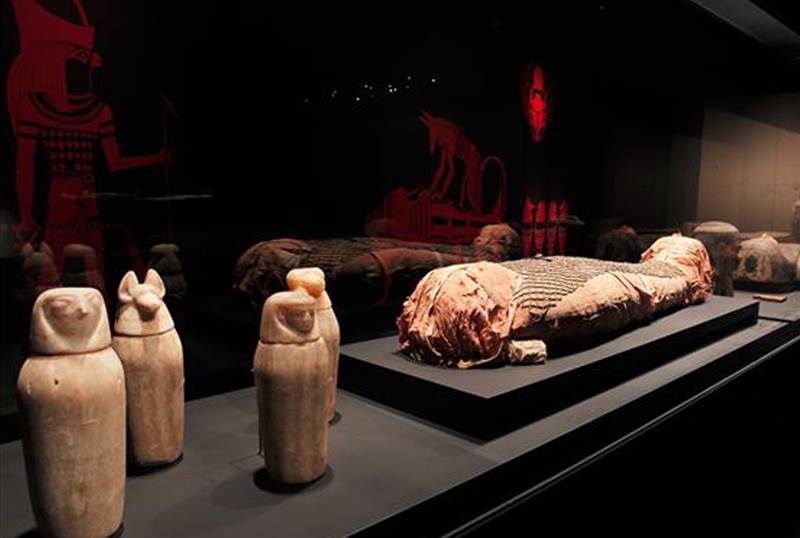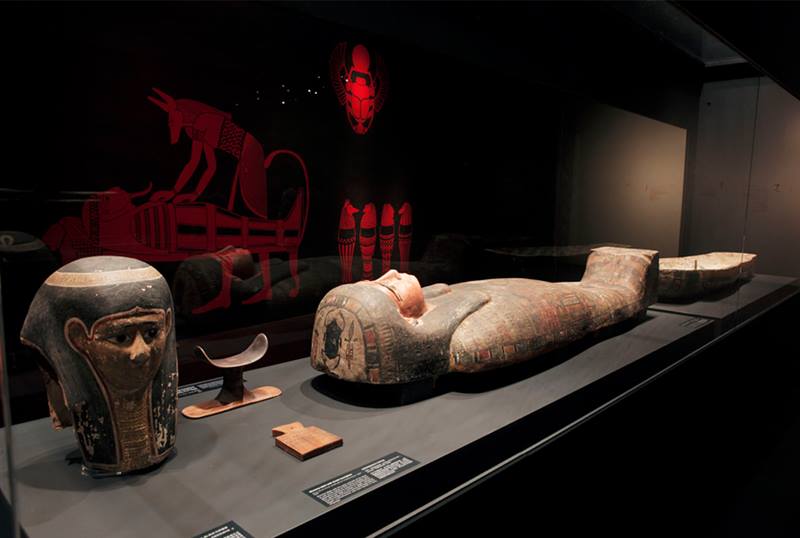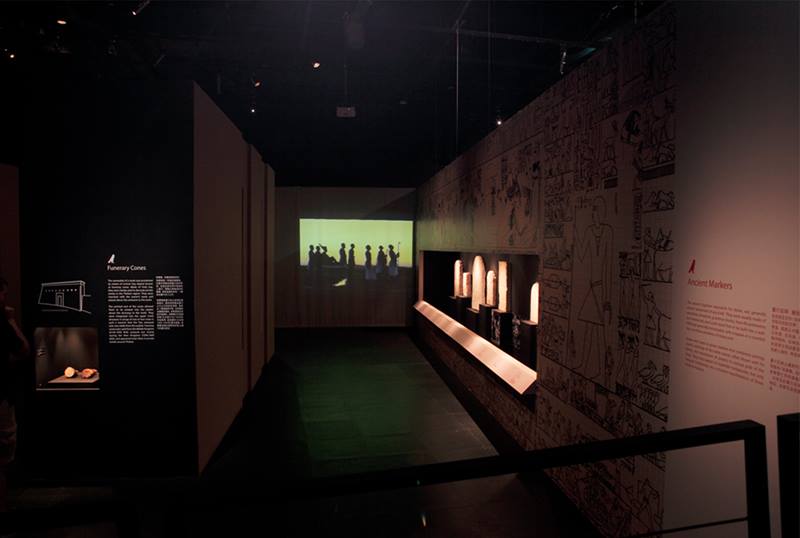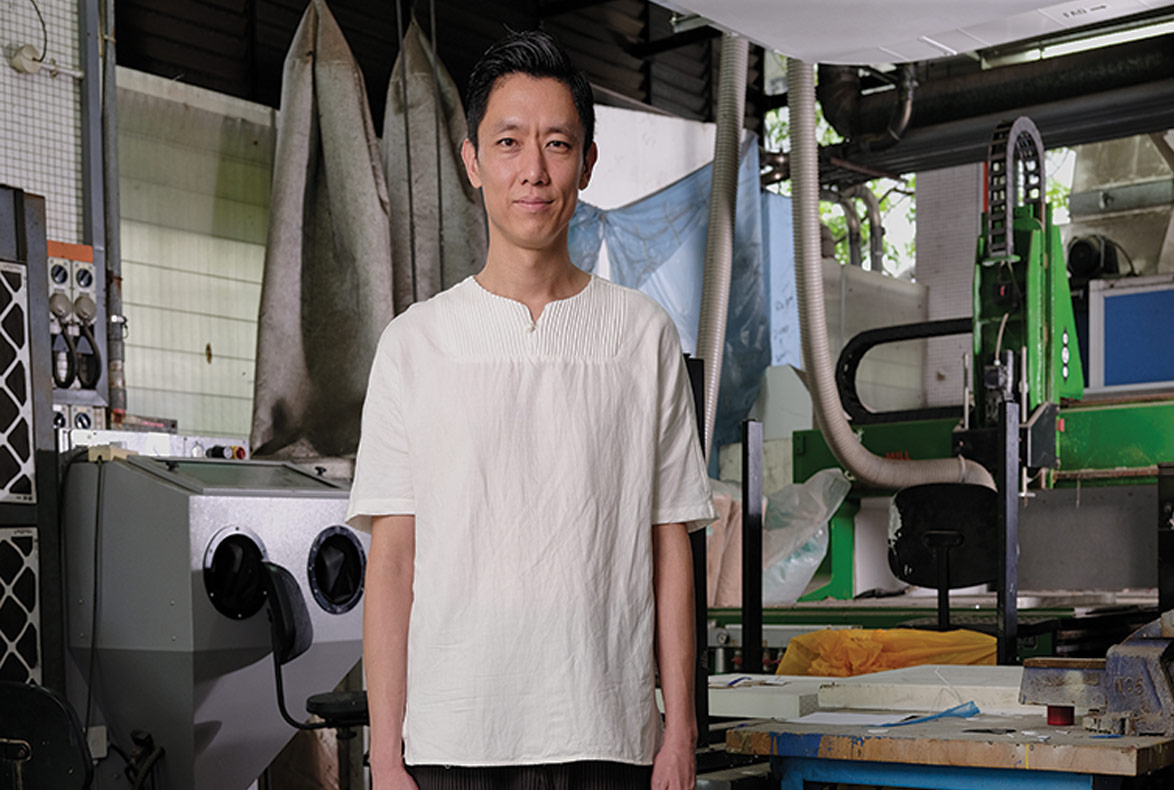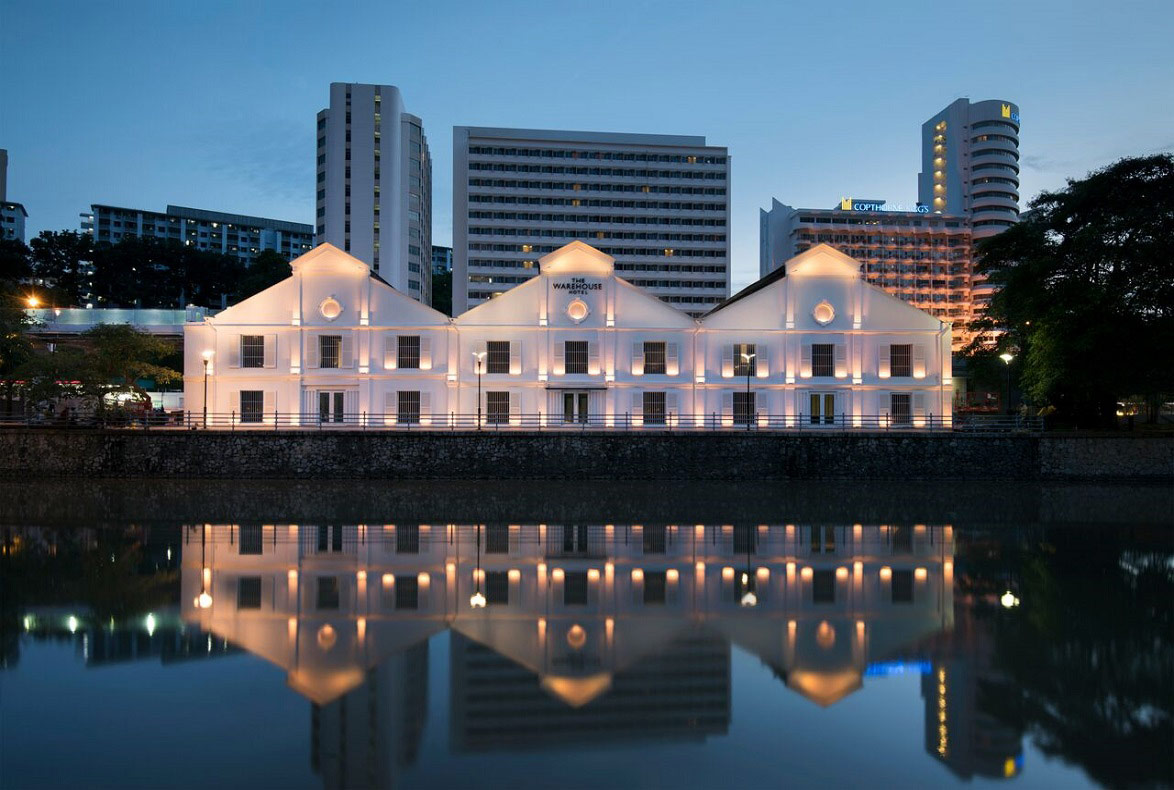* DESIGN OF
THE YEAR 2010
Quest for Immortality - The World of Ancient Egypt
Quest for Immortality – The World of Ancient Egypt was an exhibition presented by the National Museum of Singapore from 22 December 2009 to 4 April 2010, in co-operation with the Kunsthistorisches Museum in Vienna, Austria. Led by design director Laura Miotto of gsmprjct creation pte ltd, the exhibition design team aimed to create an evocative sequence of spaces that could lead the public into an intuitive understanding of the collection and to experience the passage of the ancient Egyptians into the afterlife, illustrating the idea that death is not an end but a transition to a new state of being.
The exhibition was the result of months of collaboration between numerous people. In close cooperation with the museum, the design process began in January 2009 and was carried out as a holistic approach that involved the creative direction not only of the exhibition but also of the publicity campaign. The project involved curators, historians, conservators, educators, marketing and communication staff, creative consultants, music and sound specialists, lighting professionals, exhibition technicians, fabricators, and art movers. Says Ms Miotto, “The process of creating an exhibition is collective … However, it is not just the juxtaposition of different expertise but a holistic and creative endeavour. This exhibition required quite a complex process and various adjustments before reaching the final design. I think this is what makes a design to be perceived as a unified effort.”
Given the age and the importance of the collection to be displayed, the design strategy had to address challenging conservation requirements while enabling the visitor to get close to a distant, mysterious culture. Says Ms Miotto, “When we started working on Quest for Immortality – The World of Ancient Egypt, our aim was to capture the visitor’s imagination. An exhibition of this kind should encourage art appreciation and stimulate the desire to learn. We thought it was important to facilitate the understanding of such an ancient collection and history but we also wanted to keep a sense of mystery.”
As a result, the design team attempted to put the objects in context by suggesting an arrangement that evoked the configuration of Egyptian tombs while allowing the design language to remain abstract and maintaining the inscrutability of the objects. Ms Miotto believes that the team was able to achieve the serene atmosphere of the exhibition and the stillness that surrounded the mummies in the burial chamber by taking their spiritual dimension into consideration.
This approach guided the design team in finding a way to express the elusive ideas drawn from the interpretation of the objects and the spatial qualities of their historical context, the ancient tombs along the Nile River. The result was the articulation of the exhibition into five zones.
The Entrance was created as an introduction to ancient Egypt, based on the concept of a passage. An elongated, slanted wall bearing the exhibition title Quest for Immortality – The World of Ancient Egypt welcomed visitors. The entrance, with three oblong doors, also evoked the scale and proportions of Egyptian archeological sites and the monumentality of the architecture.
The second zone was the Mirror Room containing Egyptian sculptures conveying a sense of timeless and motionless beauty. Stillness, repetition and symmetry used in the display arrangement enforced their essential quality and aesthetic. Lateral mirrors positioned at the two sides of the sculpture gallery amplified their presence in space, creating the illusion of infinity.
Next was the Turquoise Room showcasing the quest for the eternal in everyday life. Jewellery, vessels, small statues and writing implements were presented as isolated elements, like in a hieroglyphic representation. This effect was achieved though the creation of an array of small modular showcases. Internal illumination was used to make these showcases glow in the dark to draw the eye.
The Ritual Chamber & Serdab zone presented the main elements found in the “public” part of the tomb where offering rituals were performed for the deceased. Here, the False Door was displayed as a focal point of interaction between the living and the dead. Statues of the deceased visible through narrow slits evoked the atmosphere of the Serdab. A large graphic mural reproducing paintings from the tomb-chapel of Khnumhotep at Beni Hassan expressed the richness of tomb decoration.
Visitor exploration culminated in the Burial Chamber representing the magic passage to eternity, following in parallel the journey to the Netherworld. Visitors were able to observe mummified bodies close-up. One of the mummies was displayed in the centre with the typical magic accessories that would accompany it through the Akh transformation.
A combination of visuals, colours, materials, lighting and music generated a distinct mood for each of these zones. The outcome was an immersive experience where design elements were kept to the essential, ancient objects were seen in a contemporary way and the audience was intellectually and emotionally engaged in an authentic exploration.
From a designer’s perspective, one of the distinctive aspects of the exhibition was the orientation of the objects and the overall layout. Ms Miotto recalls that the first mummies she ever saw in a museum stood vertically in glass cases lined up “as a sinister array of motionless statues looking at the visitors”. In Quest for Immortality – The World of Ancient Egypt, she says, “I opted to position all sarcophagi and mummies horizontally”. Another distinctive design element, though one that was less obvious to visitors, was the rotation of the exhibition layout to follow the cardinal directions of Egyptian tombs.
Ms Miotto describes exhibition design as “a cross-disciplinary exercise where architecture, lighting, music, installation, graphics and moving images are interwoven to form a certain aesthetic and emotional engagement.” The breakthrough moment in the design process, she says, was to feel that all these elements were coming together. “When we finished installing the largest showcase of the exhibition, containing a mummy with a full set of objects from a burial chamber, we paused to look at the set up for the first time in semi-darkness. That same day the sound designer came and played a composition he had created using sounds from original ancient Egyptian instruments. It was a moving moment to feel the solemn infusion of music and lights.”
READ MOREABOUT THE DESIGNER
On Ms Miotto’s design philosophy, she says: “I see design as a process of transformation. Design can transform our perception, our understanding of reality. I am not in search of a style when I design an exhibition. A museum artefact can always tell us a story. When approaching a project I try to respect the collection to be displayed and the visitors who will receive it.”
READ MOREDESIGNER
gsmprjct creation pte ltd
Laura Miotto, Design Director
Jessie Er, Exhibition Designer
Jeddie Cheong, Graphic Designer
Melissa Chang, Graphic Designer
Ramesh Krishnan, Sound Designer
CONTRACTOR
AE Models Team Pte Ltd C.K. Lee
CLIENT
National Museum of Singapore
Hairani Hassan-Joshi, Curator
Insights from the Recipient
Citation
Jury Citation
The originality of the thinking in this project is evident. This project avoids the pitfalls normally associated with the display of collections such as this, and takes a traditional black box environment and structures a physical journey that provides a high level of intuitive engagement.
According to the design team, “The concept was to create an evocative sequence of spaces that could lead the visitor into an understanding of the collection and to experience the passage of the ancient Egyptians from life into afterlife, illustrating the idea that death is not an end but a transition to a new state of being.”
The spaces created out of the basic rectangular gallery are rich and varied. From the triangular entry area, through a long corridor focused on a singular object and along ramps and elevated platforms down into the final burial chamber area, it is the quality of the spatial organisation that creates the power of the experience.
VIEW JURORSNominator Citation
MS HAIRANI HASSAN-JOSHI
CURATOR
NATIONAL MUSEUM OF SINGAPORE
The National Museum of Singapore held a blockbuster exhibition of Egyptian treasures titled Quest for Immortality – The World of Ancient Egypt from 22 December 2009 to 4 April 2010. The exhibition featured 230 highly significant objects from the collection of the Kunsthistorisches Museum in Vienna, Austria.
The Egyptian civilisation has never failed to pique the interest of people all around the world, including Singaporeans who are intrigued by the splendour of its civilisation – from its monumental pyramids, the bountiful treasures discovered and mostly the fascination with their mummification rituals. It was therefore essential for the exhibition design to provide the right ambience to enable visitors to explore the mindset of the ancient Egyptians.
Laura Miotto managed to successfully create a display that presented the artefacts authentically, adhering to the strict conservation requirements while simultaneously enhancing each object’s aesthetic values. The effort undertaken by Ms Miotto to fully immerse herself in understanding the passage of the Egyptians from life into eternity was clearly evident in her evocative design, through the use of space, graphic treatments, moving images, dramatic lighting, sound and music. She managed to craft an appealing and coherent gallery design and communication campaign that proved successful in branding the image of the exhibition. It garnered 118,071 visitors in total, establishing a new record for the National Museum!
As a result of her dedication and passion for this project, visitors were fully immersed in the exhibition – forgetting the “modern” world they left behind upon entering the gallery doors into ancient Egypt.

